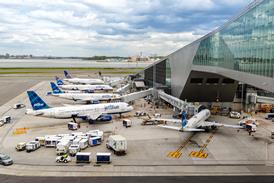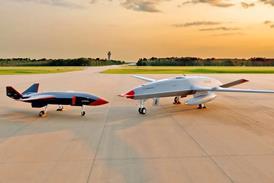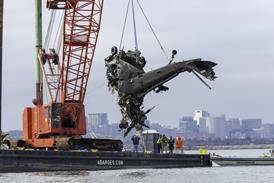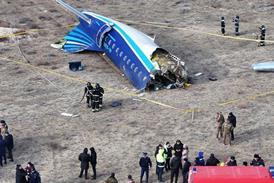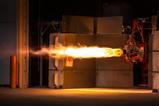US munitions producer Raytheon is increasing the number of guided air-to-air missiles it delivers annually.
The defence giant on 4 June said it is expanding production of the popular AIM-9X Sidewinder missile to 2,500 units annually.
The additional capacity was made possible by a $1.1 billion contract from the US Navy (USN) covering AIM-9X Block II missiles. Raytheon notes the order represents the largest contract in the multi-decade history of the Sidewinder programme.
“This award represents a historic milestone for the AIM-9X programme, further emphasising its importance to the US and partnered nations,” says Barbara Borgonovi, president of naval power at Raytheon.
A 2024 Pentagon report noted that the AIM-9X production rate in 2022 was roughly 1,400 units annually, with that figure increasing to 1,644 missiles annually in September 2024.

Although primarily thought of as an air-to-air fighter weapon, heat-seeking Sidewinders can also be launched from naval vessels, ground-based air defences and rotary-wing aircraft such as the US Marine Corps’ Bell AH-1Z attack helicopters.
The latest award covers a total of 1,756 Block II Sidewinder missiles, including more than 800 for overseas customers.
More than 30 countries field AIM-9Xs, according to Raytheon. Washington has approved major sales of the missile to Turkey and Norway in recent weeks.
The Norwegian deal was valued at $371 million by the US Defense Security Cooperation Agency and covers 300 Sidewinder examples. Turkey’s package of 60 missiles was valued at just under $80 million.
The record Sidewinder order comes less than one year after the Pentagon inked the largest-ever contract for another Raytheon system – the AIM-120 Advanced Medium-Range Air-to-Air Missile (AMRAAM). That $1.2 billion deal will fulfill missile orders from a dozen countries, plus the US Air Force and USN.
Raytheon’s expansion of AIM-9X production comes amid warnings that Western allies’ stocks of precision munitions are dangerously insufficient to support protracted high-intensity conflicts with modern adversary like Russia or China.
At the same time, production of the weapons has stagnated for years, with governments reducing purchases to minimum levels or eliminating them entirely, as was the case for Raytheon’s venerable shoulder-fired Stinger anti-air missile – which is now again in production after a 20-year hiatus.
Russia’s 2022 invasion of Ukraine and increasing tension in the Indo-Pacific region led defence industry executives to sound the alarm, warning they cannot rapidly expand production of complex, modern weapon systems as fast as previously.
While smaller missiles like Sidewinders and AMRAAMs can be produced in the low thousands annually, larger and more-capable systems like Lockheed Martin’s Long-Range Anti-Ship Missile are being assembled at a rate of less than 1,000 annually.
Defence manufacturers say they need consistent, predictable orders for guided munitions covering multiple years of procurement to justify hefty investments needed to expand production ceilings.
Congress in 2023 approved the Pentagon to purchase tens of thousands of precision missiles, with Raytheon and Lockheed both subsequently expanding their capacity to deliver various types.
“Through our partnership with the US Navy, we are well positioned to support this increased demand,” Raytheon’s Borgonovi says.
New entrants into the defence space, such as California-based start-up Anduril, have also unveiled proposals for families of cruise missiles specifically designed for high-rate production.




